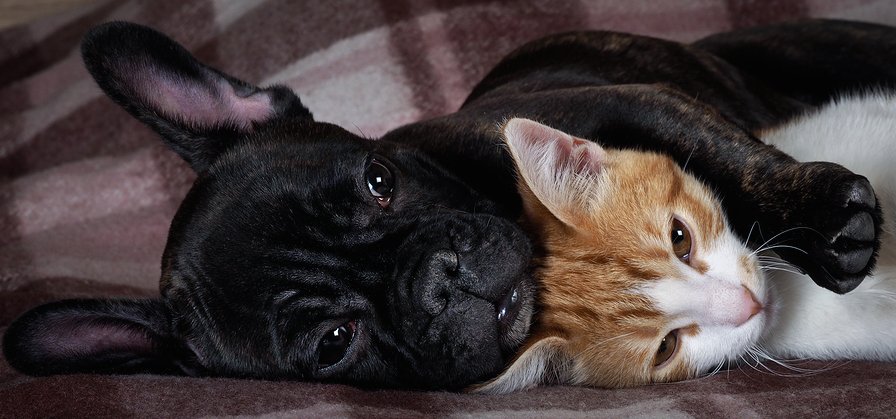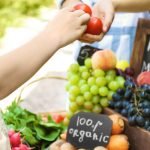One of the cornerstones of our modern understanding of human development comes from work done by a psychologist named Abraham Maslow in 1943. Maslow developed a “hierarchy of human needs”—most often displayed as a pyramid ranking of what all humans need in order to thrive, in order of importance.1 MacLeod, Saul. “Maslow’s Hierarchy of Needs.” 2007. Simply Psychology. 12 October. 2016. http://www.simplypsychology.org/maslow.html At the very bottom of the pyramid, the foundation level, are physiological needs like food and shelter. Next in importance is the need for safety, then the need for relationships. At the top of the pyramid are higher-level, more esoteric needs, including developing self-esteem and fulfilling life purpose. According to Maslow, the point of human existence is to move consciousness to the higher levels, beyond mere survival.
Mere survival is, after all, for the animals, right? We don’t think of animals as having needs much higher-level than getting to meal time, but a phenomenon noted in some species turns that idea on its head and adds a twist to Maslow’s theory. Last year, scientists at Oxford University studied wild birds to assess their individual feeding habits.2 “Wild birds choose love over food.” 13 November 2015. University of Oxford News. 13 October 2016. http://www.ox.ac.uk/news/2015-11-13-wild-birds-choose-love-over-food To get the most accurate readings, they tracked each bird electronically, tagging it with a radio frequency collar that matched a corresponding feeding station. When the bird approached the right station, the gate to the food stash would open. If the bird went to a station that didn’t match its tag, it couldn’t access the food.
The amazing finding was that the birds did not necessarily go to stations where they could access food—not when “love” was involved. Rather, if the bird was part of a pair and if each member of the couple was assigned to a separate station, rather than each go to its own station to feed, one bird would usually choose to hang out with its mate, going hungry. In other words, a bird assigned to Station X would accompany its mate to Station Y instead of satisfying its own appetite, even though that meant that it could only watch while its mate enjoyed a meal.
Even more, the birds opted to work in tandem. The scientists noted that the birds eventually figured out how to feed both mouths in what appeared to be a cooperative heist. The bird with the access code would open the gate, and in the two seconds it remained open, the locked-out bird would make a grab for all it could get.
The study director, Josh Firth, explains, “’The choice to stay close to their partner over accessing food demonstrates how an individual bird’s decisions in the short term, which might appear sub-optimal, can actually be shaped around gaining the long-term benefits of maintaining their key relationships. For instance, great tits [the species studied] require a partner to be able to reproduce and raise their chicks. Therefore, even in wild animals, an individual’s behavior can be governed by the long term benefits associated with aiming to accommodate the needs of those they are socially attached to.”
Choosing relationships over food? That potentially scrambles up Maslow’s pyramid, possibly meaning that for wild birds, social bonding (the third level) is the foundation upon which all else rests. And lest you think the phenomenon noted in birds is an isolated thing, consider that a study published just a few months ago in the journal Social, Cognitive, and Affective Neuroscience revealed that most dogs would just as soon receive praise as get treats.3 “A dog’s dilemma: Do canines prefer praise or food?” 16 August 2016. Science Daily. 13 October 2016. http://www.sciencedaily.com/releases/2016/08/160816120656.htm Really? If your dog is a diehard chowhound, that bit of news might be difficult to swallow, but in fact, in the research out of Emory University, 13 dogs underwent extensive testing and only two of them consistently wanted food more than they wanted praise. The other dogs all seemed to either prefer praise, or at the least consider it equal to food.
The researchers led the dogs through 32 trials after teaching them to associate different toys with specific rewards. If the dogs chose a toy truck, they got rewarded with food, if they chose a knight doll they got verbal praise, and if they selected a hairbrush, nothing happened at all. The dogs were then presented with each of these objects while undergoing MRI scans. Four of the dogs had particularly strong positive neural reactions when praised, nine had equal reactions whether receiving food or praise, and then there were the two hounds who definitely preferred food.
In a follow-up experiment, the dogs were released into a maze where one path led to the owner and the other to food. The four dogs who had experienced the strongest reaction to praise during the MRI scans almost always chose the path leading to their owner, while the two foodie dogs always chose the foodie path.
“Most of the dogs alternated between food and owner,” said the study report, “but the dogs with the strongest neural response to praise chose to go to their owners 80 to 90 percent of the time. It shows the importance of social reward and praise to dogs. It may be analogous to how we humans feel when someone praises us.”
The study report did not specify whether canine gender made a difference, but most of the dogs in the study were retriever types willing to lie still in the MRI machine for half an hour. Who knows if the results would have been the same with, say, Jack Russells or beagles? In any event, once again, we see that relationships can trump even eating in the animal kingdom.
The same principle may be at play in research published in the British Proceedings of the Royal Society B showing that when chimpanzees share food, they experience a spike in their levels of oxytocin, the “love hormone.” (The same thing happens when human mothers breast-feed babies—their oxytocin levels rise—but this study focused on voluntary food sharing among non-related animals.) Interestingly, both the chimp doing the giving and the chimp receiving the food show increased oxytocin levels.
Are animals simply more community minded than humans? Not likely. Perhaps the take-home in all this research is that we, like our animal counterparts, might be able to literally feed ourselves with love or friendship more than we realize. Those of us trying to control our food intake might do well to go give a gift to a friend instead of gorging when the urge to eat a donut attacks. We might avoid the fourth slice of pizza by opting to have a laugh or go on a walk with our partner. Perhaps social bonding is more elemental and essential than Maslow’s model suggests, if we humans have as much heart as the birds and dogs. Then again, looking back at the great tit experiment, perhaps choosing a higher level reward in the short term, at least in some cases, is really nothing more than maximizing the long term survival benefits associated with pairing and partnership. In other words, despite the experiments, Maslow’s pyramid might still stand firm.
References
| ↑1 | MacLeod, Saul. “Maslow’s Hierarchy of Needs.” 2007. Simply Psychology. 12 October. 2016. http://www.simplypsychology.org/maslow.html |
|---|---|
| ↑2 | “Wild birds choose love over food.” 13 November 2015. University of Oxford News. 13 October 2016. http://www.ox.ac.uk/news/2015-11-13-wild-birds-choose-love-over-food |
| ↑3 | “A dog’s dilemma: Do canines prefer praise or food?” 16 August 2016. Science Daily. 13 October 2016. http://www.sciencedaily.com/releases/2016/08/160816120656.htm |












and, of course, that’s one of
and, of course, that’s one of the reasons for the description “bird brain”.